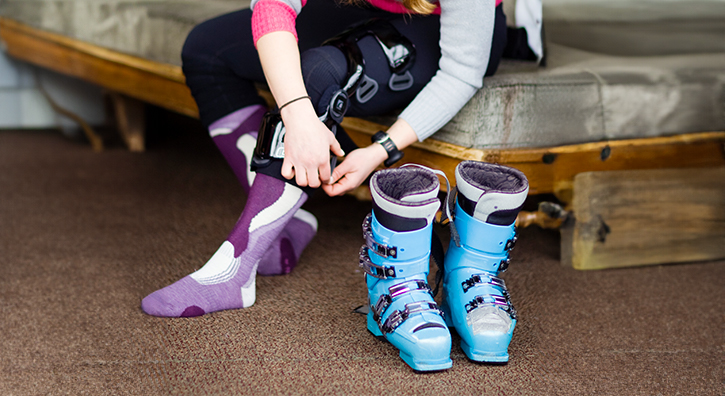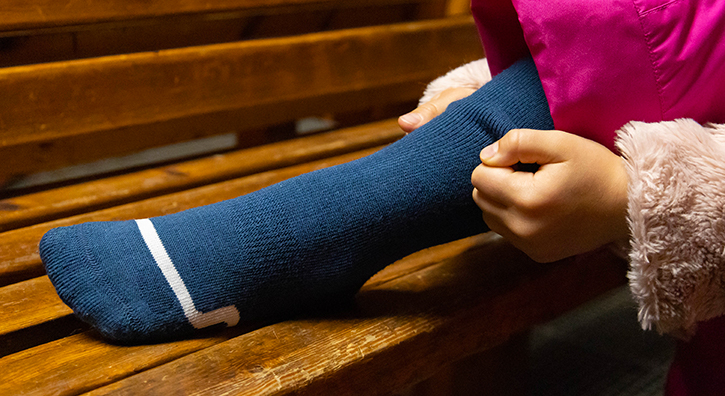0800 260 5082
Available from Monday to Friday from 9am to 7pm, and Saturday from 10am to 7pm. Closed on Sunday.
Available from Monday to Friday from 9am to 7pm, and Saturday from 10am to 7pm. Closed on Sunday.
For skiing and snowboarding, ski socks now come in a variety of materials designed to serve different purposes—providing comfort, managing perspiration, and enhancing performance during winter sports, often in extremely cold temperatures.
Cold extremities, whether hands or feet, are a real challenge for athletes practising winter sports. Fortunately, new technologies have developed accessories that today address many of the issues that used to cause serious problem
For everyone—men’s ski socks, women’s ski socks, and children’s ski socks—there is a perfect fit for every foot!
Some models are unisex, suitable for both men and women. The features of unisex ski socks often include a perfect fit that doesn’t compress or squeeze the foot, and enhanced airflow under the sole to help evacuate warm, damp air.
Each pair includes shin protection, and the socks also have padding designed to relieve muscle tension, reduce impact and friction points, and prevent blisters and bruises. You can even add layers such as heat pads to your socks to keep warm—though it’s important to choose the right ski heat pads.
The sole of the sock, and depending on the foot, the sock has an anatomical shape that regulates the temperature under the foot. It also protects tendons, ankles, muscles, and joints. For example, the SKI METAL X-SOCKS available online at "snowleader.com" cost around €60.
Specialised ski socks now come in plain or multicoloured versions, with geometric or graphic patterns, perfect for standing out on the slopes. Brands like X-SOCKS, Icebreaker, Protest, X-Bionic, Ortovox, and Volcom are well-known for offering some of the best ski socks for all.
Global brands such as the German company CEP go even further by offering socks that boost sporting performance through improved blood circulation and targeted compression zones that increase energy while reducing the risk of injuries, muscle strains, blisters, friction, and overheating of the feet.


Test Your Socks on the Slopes

For winter sports, and therefore the cold, choosing the right socks is very important. Nowadays, there is a wide choice, so there’s no excuse to still have cold feet on the ski slopes.
For snow sports like skiing or snowboarding, socks are now designed to adapt to the sport by offering increasing comfort, different reinforcements on the most exposed areas, seamless stitching that doesn’t cause irritation, and suitability for all seasons and outdoor activities. Socks now meet all these requirements.
For winter, the choice often falls on high, reinforced socks. Areas of the foot such as the heel and arch are well protected. The key criterion is to choose breathable or thermal socks that help evacuate heat and especially sweat.
No more wearing city socks for skiing, and no more layering multiple pairs. Opt for ski socks designed specifically for the purpose. These socks wick away sweat and keep your feet warm. They are made from materials that don’t retain odours and don’t slip down around the ankle.
To choose the right socks, start by picking the correct size. Usually, socks come in sizes S, M, and L rather than shoe sizes, so be careful to check the size conversion to avoid choosing the wrong model..
Important factors when selecting your ski socks are:

